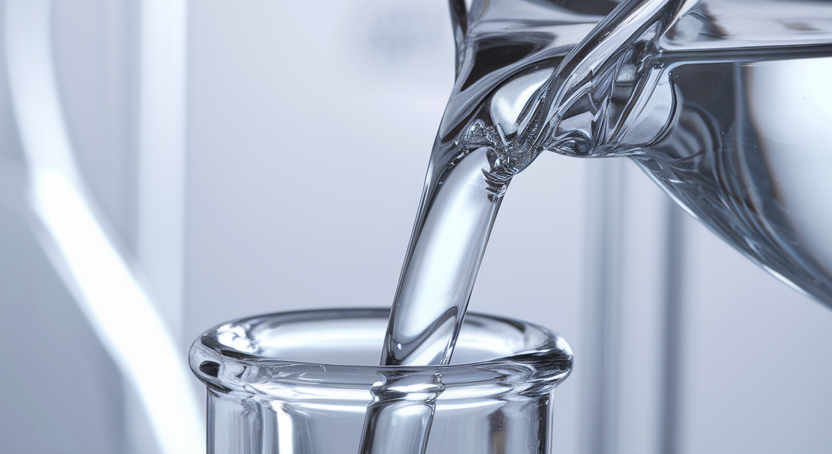Phenoxyethanol in Skincare: Why It’s Used and Its Potential Side Effects for Toddlers
By:
Kevin Chong
On
31/10/2024Reading time:
5 min
Summary:
Phenoxyethanol is a commonly used preservative in skincare and cosmetic products, often found in lotions, cleansers, shampoos, and more. It’s valued for its ability to prevent the growth of bacteria and mold, keeping products safe and stable for longer periods. However, like many ingredients in personal care products, phenoxyethanol is not without its controversy—particularly when it comes to its use in products for toddlers and infants.
In this blog, we’ll explore what phenoxyethanol is, why it’s commonly used in skincare, and the potential side effects, especially for younger children.

What Is Phenoxyethanol?
Phenoxyethanol is a synthetic preservative used in a wide range of personal care products to prevent microbial contamination. It’s effective against bacteria, yeast, and mold, which helps maintain the safety and longevity of skincare products.
As a preservative, phenoxyethanol is considered an alternative to parabens, which have become controversial in recent years due to concerns about their potential health risks. Many brands market phenoxyethanol-containing products as “paraben-free”, offering an option for consumers who are cautious about using parabens.
In addition to its preservative properties, phenoxyethanol is sometimes used as a stabilizer in perfumes and cosmetics.
Why Is Phenoxyethanol Used in Skincare?
The primary reason phenoxyethanol is used in skincare and cosmetic products is its ability to act as a broad-spectrum preservative. By preventing the growth of harmful bacteria, fungi, and mold, phenoxyethanol helps extend the shelf life of products, ensuring they remain safe to use over time.
Key reasons for its popularity include:
Effective at Low Concentrations: Phenoxyethanol is effective even at low concentrations, typically between 0.5% and 1% in most products. This makes it a powerful preservative without needing to use large amounts.
Paraben Alternative: As concerns over parabens have grown, phenoxyethanol has become a popular replacement for brands seeking to create paraben-free products.
Long Shelf Life: Phenoxyethanol helps maintain product stability for extended periods, reducing the need for consumers to frequently replace products due to spoilage.
Safety Concerns and Side Effects
While phenoxyethanol is generally considered safe when used at low concentrations, it’s not without its potential side effects, particularly for sensitive individuals and young children. Let’s break down some of the key safety concerns:
1. Skin Irritation and Allergic Reactions
One of the primary concerns with phenoxyethanol is its potential to cause skin irritation or allergic reactions. For people with sensitive skin, this ingredient can sometimes lead to redness, itching, or rashes. This is particularly true for individuals who have pre-existing conditions like eczema or dermatitis.
Babies and toddlers are especially susceptible to skin irritation because their skin is thinner and more sensitive than that of adults. Even at low concentrations, phenoxyethanol can cause discomfort for infants who are more prone to developing skin reactions from topical products.
2. Potential Neurotoxicity in Infants and Toddlers
The FDA has issued warnings about the use of phenoxyethanol in certain baby products due to concerns about potential neurotoxicity when ingested or absorbed in large amounts. For example, in 2008, the FDA issued a warning about a particular nipple cream for breastfeeding mothers, stating that phenoxyethanol, along with other ingredients, could potentially affect an infant’s central nervous system if ingested.
While the concentration of phenoxyethanol in most topical products is considered safe, the risk to infants and toddlers is higher because their bodies are still developing and may not be able to process or eliminate certain chemicals as efficiently as adults.
3. Ingestion Risks
Though phenoxyethanol is used in many topical products, it’s important to note that it should never be ingested. This is particularly concerning for toddlers who may accidentally ingest skincare or cosmetic products, such as lotions or baby wipes, containing phenoxyethanol. If large amounts are ingested, phenoxyethanol can cause symptoms like vomiting, diarrhea, and even respiratory distress in extreme cases.
Is Phenoxyethanol Safe for Toddlers?
While phenoxyethanol is approved for use in skincare products by regulatory bodies like the FDA and European Commission, its safety is largely dependent on how and where it’s used. Most experts agree that at low concentrations (typically 1% or less), phenoxyethanol is generally safe for use in adult skincare products.
However, when it comes to infants and toddlers, the situation is more complex. Because their skin is more sensitive and their bodies are still developing, extra caution should be taken when using products that contain phenoxyethanol on young children.
Parents should be mindful of the potential for skin irritation and avoid using products with phenoxyethanol on babies or toddlers who have sensitive skin or a history of eczema. If you are concerned about potential neurotoxic effects, it’s best to opt for fragrance-free and preservative-free products specifically formulated for babies and young children.
Phenoxyethanol is a widely used preservative in skincare and cosmetics, valued for its ability to keep products free from harmful bacteria. For most adults, it poses little risk when used at low concentrations. However, when it comes to infants and toddlers, parents should exercise caution. While the risk of harm is minimal in small amounts, concerns about skin irritation, neurotoxicity, and the possibility of accidental ingestion make it important to choose skincare products for young children carefully.
If you’re concerned about phenoxyethanol in products for your baby or toddler, look for natural alternatives or consult with a pediatrician to find the safest options for your child’s skincare needs.
